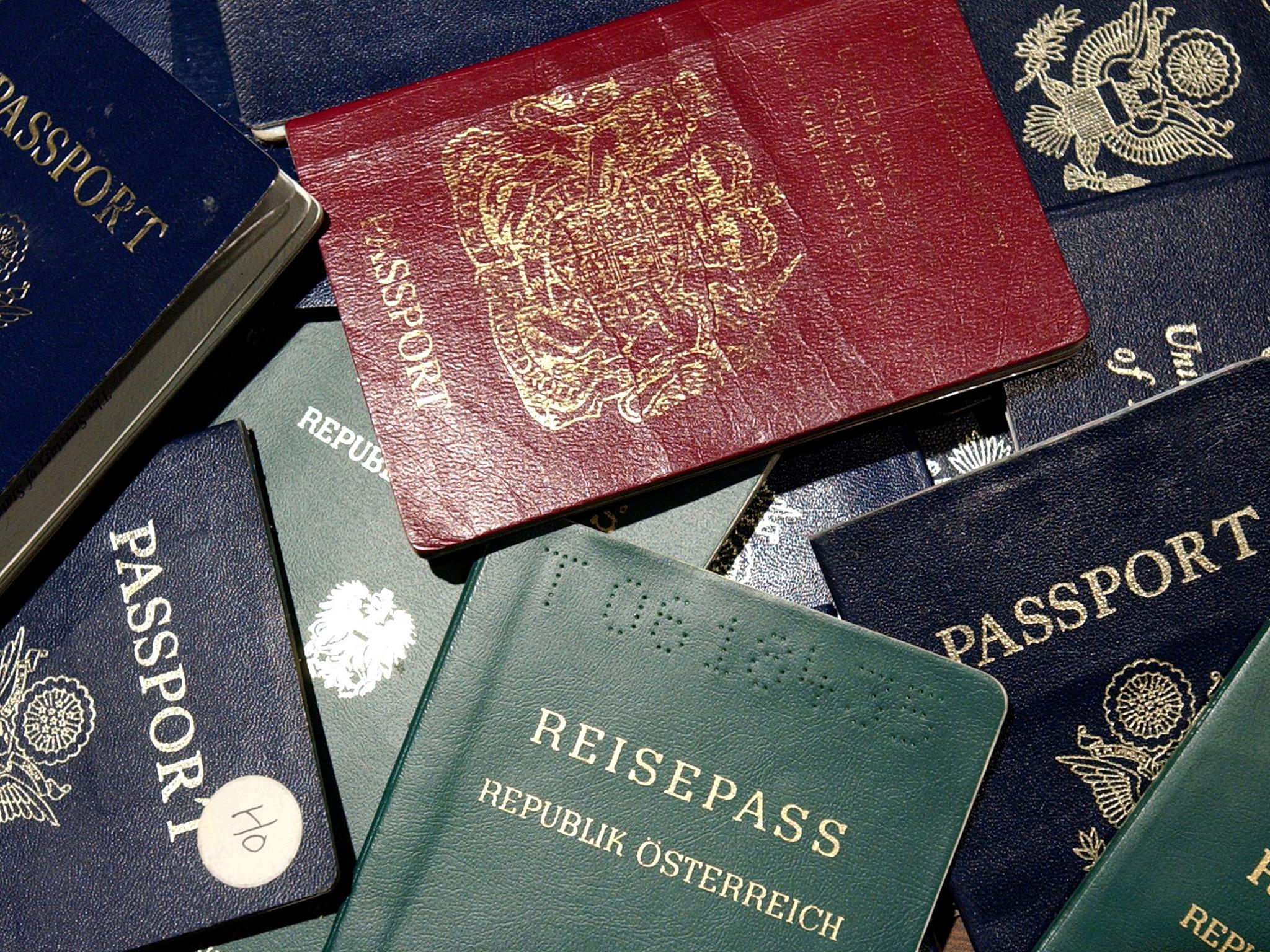Why passports always come in four standard colours
'Within each colour hue, we see vast variations'

A passport is the key to getting into other countries. You might have noticed, maybe while waiting in the passport-control queue, that these travel documents come in only a few colours.
In general, passports are only red, green, blue, or black, according to Hrant Boghossian, the vice president of marketing at the financial advisory firm Arton Capital, which runs the interactive passport database Passport Index.

Passports do, however, come in different shades of each of the four main colour groups. “Within each colour hue, we see vast variations,” Boghossian told Business Insider via email. “There are in fact many passport colours.”
The process for selecting colours
There are “many possible scenarios” as to why countries opt for a particular colour, according to Boghossian.
“Members of the European Union use burgundy, while Caricom states use blue passports,” he said. Caricom, or the Caribbean Community and Common Market, includes 15 Caribbean countries and dependencies.
There may be geographical and political motives for using certain colours. “Some could argue that the burgundy red is due to a past communist history,” Boghossian said. He added that blue passports were generally symbolic of the “new world” — North America, South America, Oceania, etc.

For some countries, it's about faith. “Most Islamic states use green passports because of the importance of the colour in their religion,” Boghossian said. Green is thought to have been the Prophet Muhammad's favourite colour and is also “a symbol of nature and life,” according to Slate's Christopher Beam, which makes the colour “a natural fit for Islam and the Middle East.”
Other nations opt for styles that reflect their individual character and identity.
“Swiss passports are bright red,” Boghossian offered as an example. “The passport of Turkey has changed to burgundy, in hope to join the EU.”
Curiously, he noted that the US had tried numerous colours — red, green, and now blue.
Passports are also dictated by what's practical. Sometimes the colour of travel documents comes down to what's available.
“Passport production is a highly controlled process, and only few companies around the world are doing it,” Boghossian said. The cardstock used for passport covers is “usually supplied by a third party” and therefore “only comes in certain colour variations to meet the required standards,” he said.
Passport design is entering a new era
Passports haven't changed much in the past decades, Boghossian says, but that's all beginning to change.
“We are entering an exciting age of countries starting to include special features to differentiate their passports,” he said.
Some of the coolest passport designs include ones with UV artwork like ones from Canada, the UK, the US, and China that expose “hidden” images under UV light. And then there's Finland's animated image of a moose running, which was released in 2012.
According to Boghossian, the UK has a unique passport variation: the Queen's Messenger passport, which is used by a handful of individuals to deliver important information to British consulates and embassies around the world.
Outside the four key passport colours, Boghossian cited exceptional countries like Canada, whose citizens use white passports as temporary travel documents. Norway offers passports in different hues with sleek minimalist designs.
You can see a gallery of passports, divided by location and colour, on Passport Index's website.
Read more:
• Brexit will push the UK into a 'currency crisis'
• Leaked document from the New York Fed says Barclays was 'weak' at preventing rogue traders
• Photos take us inside ISIS' underground lair
Read the original article on Business Insider UK. © 2015. Follow Business Insider UK on Twitter.
Join our commenting forum
Join thought-provoking conversations, follow other Independent readers and see their replies
Comments
Bookmark popover
Removed from bookmarks